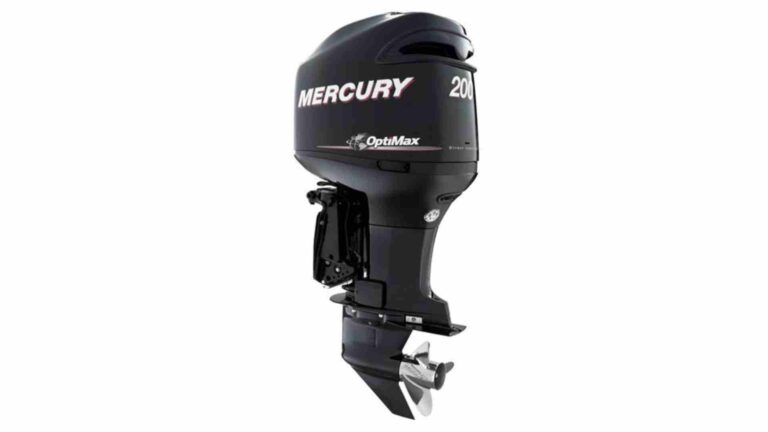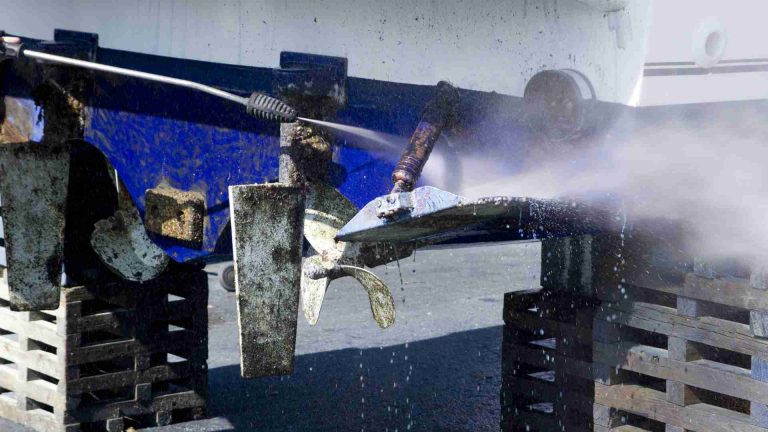How to Put Line on a Fishing Reel for Beginners (Spinning Reel)
Learn how to spool a spinning reel for beginners with our step-by-step guide. Master fishing line setup to avoid twists and tangles.
Spooling a spinning reel correctly is a fundamental skill for any angler, especially beginners. A properly spooled reel ensures smooth casting, reduces line twists, and increases your chances of landing fish. This comprehensive guide walks you through choosing the right fishing line, identifying when to replace old line, spooling a spinning reel step-by-step, and maintaining your line for long-term use. With practical tips and clear instructions, you’ll be ready to hit the water confidently.
Why Proper Spooling Matters
A poorly spooled fishing reel can lead to frustrating issues like line twists, tangles, or even snapped lines during a cast or fight with a fish. These problems can turn a relaxing day on the water into a series of setbacks. Conversely, a well-spooled reel with fresh, high-quality line enhances casting distance, accuracy, and durability. For beginners, mastering this process early builds a strong foundation for successful fishing trips.
Choosing the Right Fishing Line
Selecting the appropriate fishing line is the first step to spooling your spinning reel effectively. The three main types of fishing lines—monofilament, fluorocarbon, and braided—each have unique characteristics suited for different fishing scenarios. Below is a detailed breakdown to help you choose.
Types of Fishing Lines
- Monofilament Line
- Characteristics: Single-strand line with moderate stretch, affordable, and versatile.
- Best For: Floating baits, jigs, or live bait. Its stretch helps absorb shocks, keeping hooks secure in a fish’s mouth.
- Pros: Easy to handle, good knot strength, floats well.
- Cons: Visible in clear water, degrades with UV exposure.
- Price Range: $5–$15 for a 300-yard spool (e.g., Berkley Trilene XL, 6 lb test).
- Fluorocarbon Line
- Characteristics: Nearly invisible underwater, less stretch than monofilament, and abrasion-resistant.
- Best For: Clear, shallow waters or finesse fishing where fish are line-shy.
- Pros: Sinks faster, sensitive to light bites, durable against rocks and cover.
- Cons: Stiffer, more expensive than monofilament.
- Price Range: $10–$25 for a 200-yard spool (e.g., Seaguar InvizX, 8 lb test).
- Braided Line
- Characteristics: Made of woven synthetic fibers, zero stretch, and high strength-to-diameter ratio.
- Best For: Bottom fishing, heavy cover, or long-distance casting.
- Pros: Exceptional strength, thin diameter, long-lasting.
- Cons: Visible in water, requires a leader in clear conditions.
- Price Range: $15–$30 for a 150-yard spool (e.g., PowerPro Spectra, 10 lb test).
Line Selection Chart
| Line Type | Best Use Cases | Stretch | Visibility | Price (Approx.) |
|---|---|---|---|---|
| Monofilament | Floating baits, jigs, live bait | High | Moderate | $5–$15 |
| Fluorocarbon | Clear water, finesse fishing | Low | Low | $10–$25 |
| Braided | Bottom fishing, heavy cover | None | High | $15–$30 |
Recommendation for Beginners: Start with a 6–10 lb test monofilament line for general freshwater fishing. It’s forgiving, easy to handle, and budget-friendly. For example, Berkley Trilene XL (6 lb test, 330 yards) costs around $8 and is widely available.
When to Replace Your Fishing Line
Old or damaged fishing line can compromise your fishing experience. Knowing when to replace it is critical to maintaining performance. Here’s how to assess your line’s condition.
Signs of Old or Damaged Line
- Visual Inspection:
- Fading or Discoloration: Fresh monofilament or fluorocarbon lines are shiny and clear (or their designated color). If the line appears yellowed, cloudy, or faded, it’s likely degraded due to UV exposure.
- Fraying or Kinks: Run 15–20 feet of line through your fingers. If it feels rough, frayed, or kinked, it’s damaged and should be replaced.
- Elasticity Test:
- Cast a light lure (e.g., 1/4 oz). If the line forms loops or coils on the water instead of lying flat, its elasticity is compromised, indicating it’s time for a new line.
- Pull 10 feet of line and apply gentle pressure. If it breaks easily, replace it immediately.
- Performance Issues:
- Frequent tangles or backlashes during casting.
- Reduced casting distance or accuracy.
How Often to Replace
- Monofilament/Fluorocarbon: Replace every 6–12 months, depending on usage and storage conditions.
- Braided: Can last 1–2 years with proper care, as it’s more resistant to UV damage.
Tip: If you fish frequently (weekly), check your line every 2–3 months. For occasional anglers, an annual replacement is usually sufficient.
Step-by-Step Guide to Spooling a Spinning Reel
Spooling a spinning reel correctly requires attention to detail to avoid twists and ensure smooth casting. Follow these steps for a hassle-free process.
Tools Needed
- Spool of fishing line (6–10 lb monofilament recommended for beginners)
- Scissors or line cutters
- Spinning reel and rod
- Optional: Spool holder, pencil, or screwdriver for tension
- Optional: Bowl of water (to wet monofilament or fluorocarbon)
Step-by-Step Instructions
- Determine Reel Rotation:
- Hold the reel as you would when fishing (reel hanging below the rod).
- Turn the handle 2–3 times to check if the spool rotates clockwise or counterclockwise. This determines how the line should come off the supply spool to avoid twists.
- Prepare the Reel:
- Open the bail (the wire arm on the reel) by flipping it up.
- Remove any old line from the spool by cutting it off or unwinding it completely.
- Thread the Line:
- Pull the line off the top of the supply spool (label facing up).
- Thread it through all the rod’s guides, starting from the tip and working toward the reel.
- Wet the line if using monofilament or fluorocarbon to reduce memory and twisting. Soak the supply spool in a bowl of room-temperature water for 10–15 minutes before starting.
- Secure the Line to the Spool:
- Wrap the line around the reel’s spool.
- Tie an arbor knot to secure it:
- Wrap the line around the spool and tie an overhand knot in the standing line.
- Tie a second overhand knot in the tag end, about 1 inch from the first knot.
- Pull the standing line to tighten the first knot against the spool, sliding the second knot down to secure it.
- Trim the tag end, leaving 1/4 inch of excess.
- Spool the Line:
- Place the supply spool flat on the floor, label up, ensuring the line comes off in the same direction as the reel’s rotation (typically counterclockwise off the spool for clockwise reel rotation).
- Pinch the line 12 inches above the reel to maintain light tension (imagine reeling a 1 oz lure).
- Crank the reel slowly, spooling 20–30 turns, then stop to check for twists.
- If twists appear, strip the line off, flip the supply spool, and try again.
- Continue spooling until the reel is filled to 1/8 inch from the rim. Do not overfill, as this causes tangles.
- Cut and Secure the Line:
- Cut the line from the supply spool, leaving enough excess to tie a lure (about a rod’s length).
- Secure the free end with a lure, swivel, clip, or rubber band to prevent unraveling. Some reels have a tab for tying the line.
Chart: Spooling Process Flow

Tips for Spooling Success
These practical tips, gathered from experienced anglers, can make spooling easier and more effective:
- Use a Spool Holder: If you don’t have a spool vice, insert a pencil or screwdriver through the supply spool and have someone hold it to maintain tension. Alternatively, place the spool between your feet or in Crocs for hands-free tension.
- Wet the Line: Soaking monofilament or fluorocarbon in water before spooling reduces memory and prevents twists. Use room-temperature water to avoid damaging the line.
- Simulate Fishing Tension: Create slight rod flex while spooling by positioning the supply spool a few feet away. This mimics reeling in a lure, ensuring the line lays evenly.
- Use Backing for Economy: If your reel requires more line than a single spool provides, use old line as backing. Connect it to the new line with a blood knot, ensuring enough new line (100–150 yards) for casting without reaching the knot.
- Condition the Line: After spooling, apply a line conditioner (e.g., KVD Line and Lure, ~$7) to reduce memory and improve performance. Alternatively, soak the spooled reel in hot water (not boiling) for 1 hour, avoiding the drag washers.
- Make Initial Casts Long: After spooling, make several long casts and reel in quickly to set the line’s tension and minimize future tangles.
- Close the Bail Manually: Always close the bail by hand after casting. Cranking the handle to close it adds twists to the line.
Common Spooling Mistakes and Solutions
| Mistake | Solution |
|---|---|
| Line twists during spooling | Flip the supply spool or ensure it’s aligned with reel rotation direction. |
| Overfilled spool | Stop spooling at 1/8 inch from the rim to prevent tangles. |
| Loose line on spool | Maintain consistent tension (like reeling a 1 oz lure). |
| Using wrong line weight | Match line weight to reel size (e.g., 6–10 lb for 1000–3000 series reels). |
Storing Fishing Line for Longevity
Proper storage extends the life of your fishing line, saving you money and ensuring reliable performance. Here’s how to store each type:
- Monofilament/Fluorocarbon:
- Store in a cool, dry place, ideally a refrigerator or freezer, to maintain elasticity (up to 5 years).
- Keep away from direct sunlight or UV light, which breaks down the line’s chemical structure.
- Use an airtight container or ziplock bag to protect from moisture.
- Braided Line:
- More durable, can be stored in a garage or tackle box out of direct light.
- Lasts up to 2 years with minimal maintenance.
Storage Tip: Label spools with the purchase date to track age and replace as needed.
Troubleshooting Line Twists
If you encounter twists despite following the steps, try these fixes:
- Re-Spool Correctly: Strip the line back onto the supply spool, flip it, and re-spool, ensuring the line comes off counterclockwise for clockwise reel rotation.
- Use a Swivel: Attach a barrel swivel (~$3 for a pack of 10) to the line’s end, tie it to a fixed point, walk out the line, and reel it back under tension to remove twists.
- Check Lure Behavior: Spinning lures (e.g., Mepps spinners) can cause twists. Add a swivel between the line and lure to minimize this.
- Avoid Cranking Against Drag: When a fish pulls drag, stop reeling to prevent adding twists.
Recommended Spinning Reels for Beginners
Choosing a reliable spinning reel makes spooling easier and enhances your fishing experience. Here are three beginner-friendly options with specifications and approximate prices:
| Reel Model | Size | Line Capacity (6 lb mono) | Price (Approx.) | Features |
|---|---|---|---|---|
| Shimano Sienna FG | 2500 | 200 yards | $30 | Smooth drag, durable, lightweight |
| Pflueger President | 30 | 145 yards | $50 | 10 bearings, corrosion-resistant |
| Daiwa BG Spinning Reel | 2000 | 135 yards | $100 | Strong build, waterproof drag |
Recommendation: The Shimano Sienna FG (2500) is an excellent budget option for beginners, offering reliable performance for under $30.
Conclusion
Spooling a spinning reel correctly is a skill that every beginner angler can master with practice. By choosing the right line, inspecting it regularly, and following the step-by-step spooling process, you’ll avoid common pitfalls like twists and tangles. Incorporate the tips shared by experienced anglers, such as wetting the line or using a swivel to remove twists, to streamline the process. Proper line storage further ensures your setup remains in top condition. With a well-spooled reel, you’re equipped to cast confidently and enjoy successful fishing adventures.
Share How to Put Line on a Fishing Reel for Beginners (Spinning Reel) with your friends and Leave a comment below with your thoughts.
Read Can You Live on a Yacht? and if so, for How Long? – Guide until we meet in the next article.






